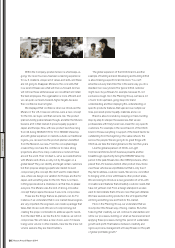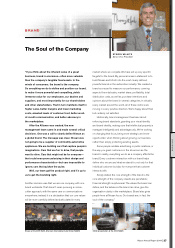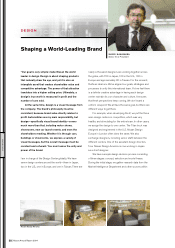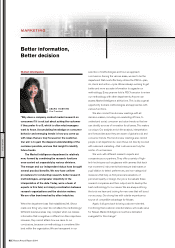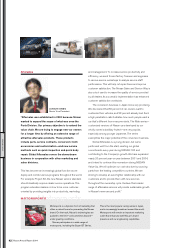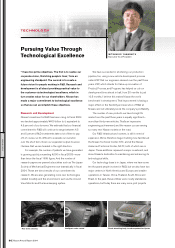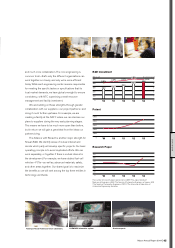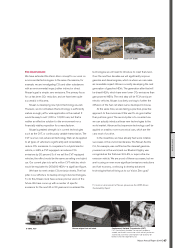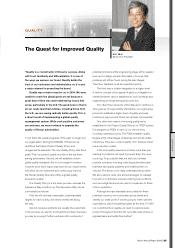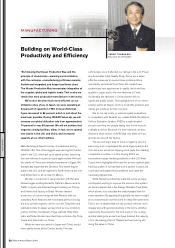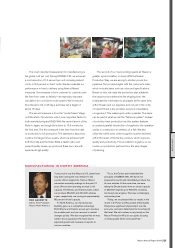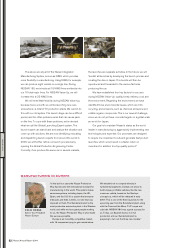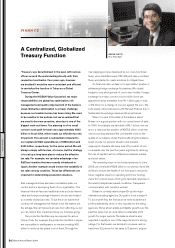Nissan 2005 Annual Report Download - page 46
Download and view the complete annual report
Please find page 46 of the 2005 Nissan annual report below. You can navigate through the pages in the report by either clicking on the pages listed below, or by using the keyword search tool below to find specific information within the annual report.
Nissan Annual Report 2004
44
Pursuing Value Through
Technological Excellence MITSUHIKO YAMASHITA
Executive Vice President
TECHNOLOGY
OUR WORK
Rear active steering Intelligent cruise control Shock-absorbing body, to reduce pedestrian injuries
“I have two prime objectives. The first is to realize our
corporate vision, ‘Enriching people’s lives,’ from an
engineering standpoint. The second is to create a
future vision for people working in R&D. Research and
development is all about providing practical value to
the customer via technological excellence, which in
turn creates value for our shareholders. Nissan has
made a major commitment to technological excellence
so that we can accomplish these objectives.
Research and Development
Nissan’s investment in R&D has been rising. In fiscal 2004
we devoted approximately ¥400 billion to it, equivalent to
4.6 percent of our turnover. We estimate that our financial
commitment to R&D will continue to range between 4.5
and 5 percent. R&D investments take a lot of time to pay
off, of course, so it’s difficult to evaluate our evolution
over the short term. Given our expanded output, however,
I believe that we are headed in the right direction.
For example, the number of patents we have generated
is growing quickly, exceeding 4,000 in fiscal 2003—more
than twice the fiscal 1999 figure. And the number of
research papers we present at societies such as The Japan
Society of Mechanical Engineers rose dramatically in fiscal
2004. These are direct results of our commitment to
research. We are also generating more new technologies
related to safety and the environment, such as the Around
View Monitor and the lane-keeping system.
We have succeeded in shortening our production
pipeline, too, using a new vehicle development process
called V3P that our engineers devised over the past three
years. V3P, which stands for Value-up innovation of
Product, Process, and Program, has helped us cut our
development time almost in half, from 20 months to just
10.5 months. I believe this makes Nissan the world
benchmark in development. That improvement is having a
major effect on the flexibility and execution of R&D at
Nissan, and will ultimately boost the company’s profitability.
The number of new products we have brought to
market over the past three years is equally significant—
more than thirty new vehicles. That’s an impressive
engineering achievement, and the reason you are seeing
so many new Nissan models on the road.
Our R&D infrastructure, however, is still in need of
expansion. We’ve therefore begun building new facilities at
the Nissan Technical Center, NTC, and at the Nissan
Advanced Technical Center, NATC, both of which are in
Japan. These additions represent a major investment, and
show Nissan’s dedication to maintaining and enhancing its
technological skills.
Our technology base is in Japan, where we have some
ten thousand people involved in R&D, but we also have two
major centers in North America and Europe, and smaller
operations in Taiwan, China, Thailand, South Africa and
Brazil. In the past, these entities were mostly standalone
operations, but today there are many more joint projects




